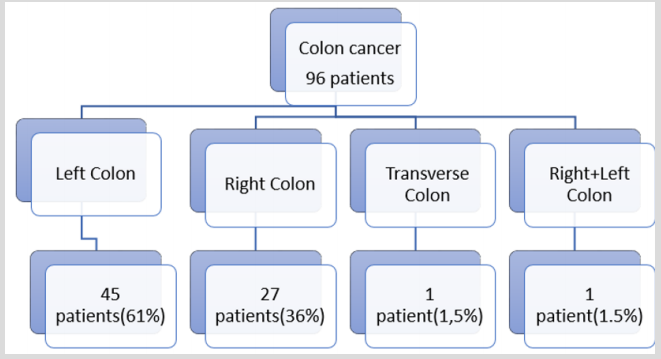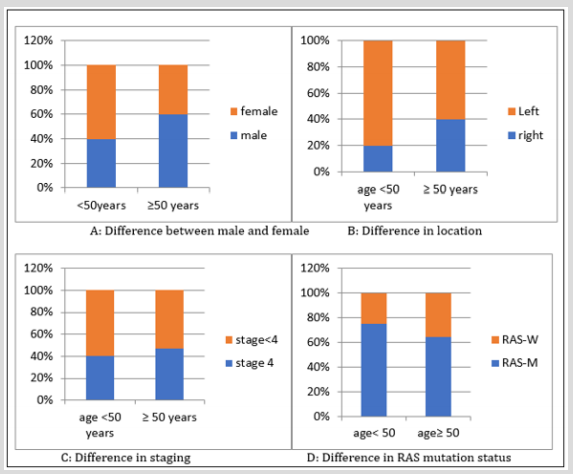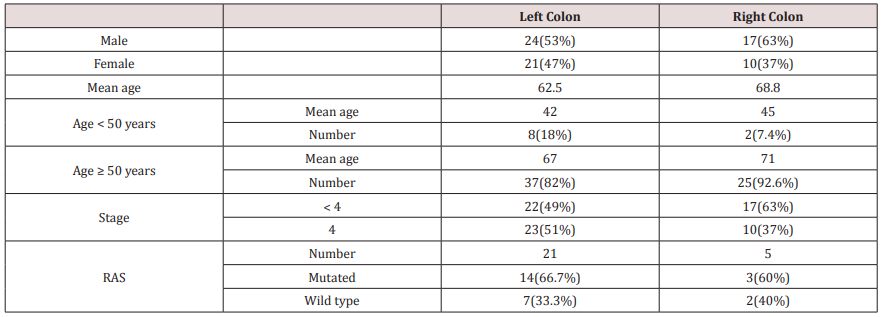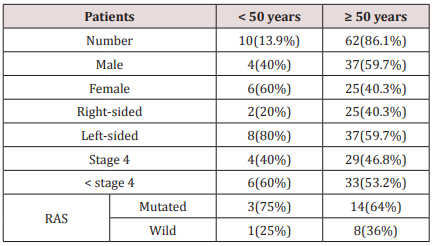Lupine Publishers | Journal of Health Research and Reviews

Background: The introduction of electronic services and devices has led to rapid and dramatic innovation and development
in the laboratory environment. However, despite the numerous achievements and contributions in the health sector, laboratory
practice continues to encounter certain difficulties in the use of electronic services and devices.
Objective: This study examined the challenges medical laboratory personnel face in the use of electronic services and devices,
and its impact on the attitude of medical laboratory personnel.
Methods: A total of 62 medical laboratory personnel were
conveniently selected from 8 hospitals within the Central region of
Ghana. A questionnaire on Electronic Medical Laboratory Personnel
Services for Efficient Health Delivery Services in Ghana was
used to collect data for the study. Data collected were screened, coded
and entered into computer software, and analysed using the
Statistical Package for Social Sciences (SPSS version 21) for Windows.
Results: Findings revealed that the supply of electronic
device accessories such as reagent was a challenge as only 37.1% of the
respondents agreed it was easy. About 15% responded that
maintenance/servicing of electronic device was easy. Majority showed
positive attitude towards the operation of electronic device
understanding principle under which electronic devices work. A higher
proportion of the respondents agreed to the fact that results produced
by electronic device are reliable, with average duration of
producing being minutes indicating a better turnaround time. The use of
electronic services and devices in the medical laboratory
has had a positive impact on the attitude of some medical laboratory
personnel.
Conclusion: Maintenance and repair works on electronic devices by maintenance/service team have to be prompt and regular.
Workshops and training should be organized on use of electronic services and devices on regular basis for medical laboratory
personnel so they could be abreast with current trends in their usage.
Keywords: Electronic Services and Devices; Laboratory, Medical Laboratory Personnel
The use of medical laboratory tests to detect, diagnose, monitor
and treat disease keeps on increasing day by day. The results produced
by medical laboratory tests are used by physicians to make decisions
regarding a patient’s medical condition. Some sources estimate that
70-80% of decisions made by physicians are directly dependent on
medical laboratory values [1]. According to contribution to modern
medicine by laboratories has been recognized as something more
than the addition of another resource to medical science and is now
being regarded as the seat of modern medicine, where physicians
account for what they observe in their patients. As stated by [2],
the emergence of sophisticated automated laboratory machines
with complex procedures and the laboratories that housed them
coincided with the worldwide political, industrial and philosophical
revolutions. These have transformed our world which was
dominated by religion and aristocracy into those dominated by the
industrial, commercial and professional classes. Years after years,
laboratories and their heads were met with opposition especially
those clinicians who did not understand their work and saw their
profession as a threat to science. However, as they continuously
practice this profession, lay people and many health practitioners
saw the introduction of medicine in the laboratory as a removal of
medical knowledge from the realm of common experience to that
of evidence based. Recently, with the introduction of electronic
services and devices, the laboratory environment has experienced
rapid and dramatic innovation and development [1]. There has
been a significant increase in the variety and nature of medical
laboratory investigations and services. This is due to technology
and it is expected to continue. This has made laboratory technology
according to [1] the forefront of medical advances. Testing
techniques to diagnose or screen for a particular condition are
now available before effective treatment. According to [3], advance
in medical laboratory technology involving new tests, automated
equipment and testing technique has resulted in a more efficient
laboratory testing [4]. As stated by [5], information technology
has also influenced the transfer of data by decreasing the time it
takes to request for and receive test results and also by creating
opportunities for research on large datasets. The integration of
electronic services into medical laboratory practice may be affected
by policies related to training of personnel, attitude of personnel,
coverage and finally payment of services. Ghana was celebrated in
2013 for hosting five out of the nine state owned ISO laboratories
in West Africa. Besides these ISO laboratories, there are numerous
laboratories spread along the length and breadth of the country
which function in hospitals, clinics just like strategically positioned
private laboratories [6]. All these achievements are through the
efforts of the scientists and the introduction of modern technology.
However, despite the numerous achievements and contributions in
the health sector in disease diagnosis, prevention, managements
and prognosis, laboratory practice continues to encounter certain
difficulties in the use of electronic services and devices. Therefore,
this study examined the challenges medical laboratory personnel
face in the use of electronic services and device and its impact on
the attitude of medical laboratory personnel in the Central Region
of Ghana.
Research Design and Site
A cross-sectional study with quantitative approach was
conducted in the Central Region of Ghana. The Central Region is one
of the ten administrative regions of Ghana. It is renowned for its
many elite higher education institutions and an economy based on
an abundance of tourist sites. There are seventeen districts in the
region with each district having a health directorate and a district
hospital and many health centers. There are also some mission
and private hospitals in the region. The region has a regional
hospital and a teaching hospital which attend to referral cases from
the district hospitals and other health facilities. All these health
facilities have medical laboratories which are in full operation with
different categories of medical laboratory personnel performing
various functions. The district, municipal, teaching, mission and
some private hospitals have laboratories which make use of
electronic services and devices in the running of patient sample.
The laboratories included Cape Coast teaching hospital, Winneba
and Swedru Municipal Hospitals and Kasoa District Hospital. The
mission and private laboratories selected were Apam Catholic
Hospital, St. Joos Hospital, MDS Lancet and Sanford Hospital.
Population
The target population for this study was all medical laboratory
personnel in the central region who make use of electronic services
and devices in their daily practice.
Sampling Procedure
Convenience sampling method was used to choose the sample.
Convenience sampling according to Dörnyei (2007), is a type of
non-probability or non-random sampling where members of the
target population that meet certain practical criteria such as easy
accessibility, geographical proximity, availability at a given time, or
the willingness to participate are included for the purpose of the
study. The researcher adapted convenience sampling method for
this study because it was assumed that most of the staff from these
laboratories either had a degree or an HND and were licensed and
certified by the Allied Health Council of Ghana to use electronic
services and devices. It was also assumed that personnel were
also easy to reach and were readily available. It was assumed that
convenience method placed primary emphasis on generalizability,
thus ensuring that the knowledge gained was representative of the
population from which the sample was drawn.
Sample Size
In this study, a sample of 62 medical laboratory personnel
were conveniently selected from Cape Coast Teaching Hospital,
Winneba and Swedru Municipal Hospitals, Kasoa District Hospital,
Apam Catholic Hospital, St. Joos Hospital, MDS Lancet and Sanford
Hospital. Out of the 62 laboratory personnel that were sampled,
6 came from medical laboratories in the teaching hospital, 14
from laboratories in municipal hospitals, 13 from district hospital
laboratories, 14 from mission hospital laboratories and the
remaining 15 from private medical laboratories. These laboratories
were used because it was observed that they have the highest
number of laboratory personnel who use electronic services and
devices in the region.
Research Instrument
A questionnaire on Electronic Medical Laboratory Personnel
Services for Efficient Health Delivery Services in Ghana was used
to collect data for the study. A questionnaire: Electronic Medical
Laboratory Personnel Services for Efficient Health Delivery Services
in Ghana (Appendix A) was developed by the researcher based on extensive
literature review on areas related to medical laboratory
practice and electronic services. These areas included challenges
medical laboratory personnel face in the use of electronic services
and devices in the laboratory, impact of electronic services on the
attitude of laboratory personnel, some unique skill that must be
acquired in using electronic devices in the laboratory and finally
measures to be put in place to ensure effective use of electronic
services in the laboratory. A pool of 39 items was created using
the content of areas reviewed as a guide. The items consisted of
both positive and negative statements to avoid respondents’
answers being skewed toward the positive respond’s options. The
questionnaire had open and close ended items.
Pilot Test
In this study, Electronic Medical Laboratory Personnel Services
for Efficient Health Delivery Services in Ghana instrument was
piloted with 5 medical laboratory personnel from the Baptist
Hospital in Winneba to validate the effectiveness of the instrument,
and the value of the questions to elicit the right information to
answer the primary research questions. This preceded the main
observation to correct any problems with the instrumentation or
other elements in the data collection technique.
Validity of Instrument
Face validity of the questionnaire items for this study was
determined by both Lecturers and colleague students to ensure
there were no redundant and ambiguous items. All reviewers’
comments and suggestions were collected, analysed and considered.
The final draft instrument contained four parts. The first part
sought information on personnel biological and educational
characteristics such as gender and age. The second and third part
of the questionnaire sought information on some of the challenge’s
medical laboratory personnel face in the use of electronic devices in
the laboratory and the impact of electronic services on the attitude
of laboratory personnel. The final part sought to identify some of
the unique skill that must be acquired in using electronic devices
in the laboratory and to find some of the measures to be put in
place to ensure effective use of electronic services and devices in
the laboratory.
Reliability of Instruments
Data from the pilot test was used to determine the reliability
of research questionnaire. Item analysis was at the point carried
out to identify items whose removal would enhance the internal
consistency of the instrument.
Data Collection Procedure
Ethical approval was obtained from the Kwame Nkrumah
University of Science and Technology (KNUST) ethical committee
to medical laboratories whose personnel were part of the target
population. The structured questionnaire was administered on the
medical laboratory personnel at different times when they were
working. The laboratories accessed included Cape Coast Regional
and Teaching Hospital, Winneba and Swedru Municipal Hospitals
and Kasoa District Hospital. The mission and private laboratories
were Apam Catholic Hospital, St. Joos Hospital, MDS Lancet and
Sanford Hospital. All the personnel who used electronic services
and devices in these laboratories were eligible to participate in
the study, but only those who gave their consents constituted the
sample. The respondents were briefed on the intended research
and their confidentiality assured as their names were not required.
The questionnaire was then administered on the personnel from
the selected laboratories.
Data Analysis
Data collected were screened, coded and entered into computer
software. The analysis was done using the Statistical Package for
Social Sciences (SPSS version 21) for Windows. Using this software,
descriptive statistics function was used to determine the mean
scores and standard deviations. These responses were converted
into percentages for easy understanding and interpretation.
Table 1 shows the general characteristics of study participants.
Most of the respondents were males (61%) with 39% females.
The dominant age group was 20-30 years (54.8%) followed by age
group of 31-40 years (33.9%). Six of the respondents representing
9.7% work in the Teaching hospital, 14(22.6%) work in Municipal
hospital with 13 (21%) of respondents working in District hospital.
Most (66%) of the respondents were medical laboratory scientist
thus degree holders with only one (2%) of the respondents being
a laboratory assistant thus certificate holder. Also, 13 (21%)
were technicians (diploma holders), and 7 (11%) had other
qualifications. Table 2 shows the mean scores of responses for
challenges personnel face. Majority (66.1%) of the respondents
showed positive attitude towards the operation of electronic
device as less challenging (M=2.6613, SD=0.47713). The table also
revealed that 48.4% (30) of the respondents had positive attitude
towards understanding principle under which electronic devices
work (M=2.4839, SD=0.50382). However, the supply of electronic
device accessories such as reagent was observed to be a challenge
and only 37.1% (23) of the respondents agreed that it was easy.
A little over a quarter 27.4% (17) of the respondents out of the
total number of respondents agreed that calibration of electronic
device was easy, and therefore revealed negative response. Less
than a quarter 14.5% (9) of the respondents out of the total
number of respondents agreed that maintenance/servicing of
electronic device was easy. This indicate that a significant number
of the respondents have challenges in using electronic device when
there is the need to either maintain or service them. With the
documentation of result by electronic equipment as a challenge,
most of the respondents, 71% (44) of the sample scored 3 with a
mean of 2.6452 and standard deviation of 0.6031. This indicates
that documentation of results was not a challenge when it comes to
the use of electronic device.
Table 1: General characteristics of study participants.
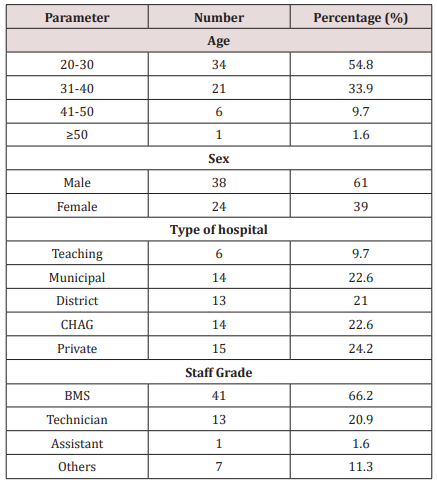
Table 2: The respondents’ responses on challenges faced by personnel.
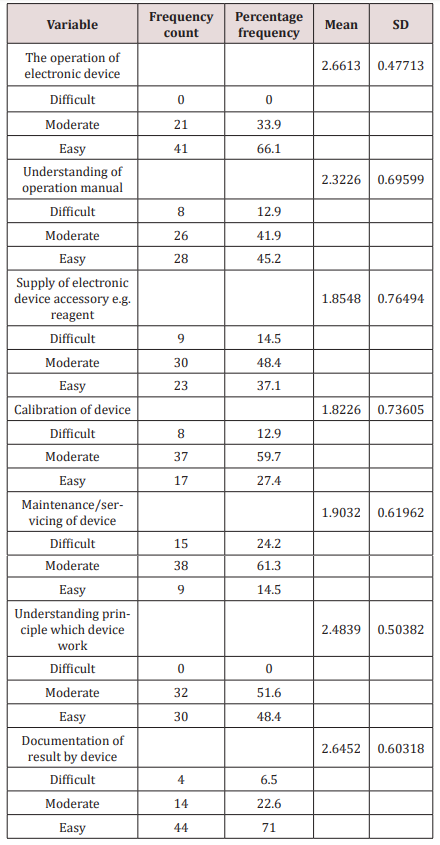
From Figure 1, almost all the respondents agreed to the fact
that results produced by electronic device are reliable as indicated
by 93.5% (58) out of the total sample. Only 6.5% (4) of the respondents
said results produced by electronic equipment are not reliable. The
average duration most of these electronic devices produce
result is in minutes as given by the respondents (77.4%, 48). Again,
6.5% (4) of the respondents however said the equipment produce
results in hours. Finally, 16.1% (10) of the respondents said electronic
equipment produced results in seconds (Figure 2). Table 3
presents mean score, standard deviation and percent frequencies
on the respondents ‘attitude in the use of electronic services’ attitude
scale. The mean scores of the respondent’s ranges between
3.3871 and 4.7097 while the standard deviations range between
0.45762 and 1.42983. Most of the mean scores items were above 4
(i.e. high agreement of the respondents) such as; “the use of these
electronic device is helpful” with a mean score of 4.6774; “I work
faster with these electronic device” had a mean score of 4.7097 and
“electronic devices are user friendly” had a mean score of 4.3548.
Percentages of most of the items were also very high in agreement.
However, in two of the items thus “I have difficulty in working when
these electronic devices break down’’ and “I have alternative means
of working when these electronic devices break down”, percentage of the
respondents who disagreed were 32.2% and 25.8% respectively. This
indicates a number of the respondents were not in
agreement to the development of positive attitude towards medical
laboratory practice.
Figure 1: The respondents’ responses on the reliability of
electronic service/device.

Figure 2: The respondents’ responses on the duration electronic devices produce result.

Table 3: The respondents’ responses on the impact of modern technology.
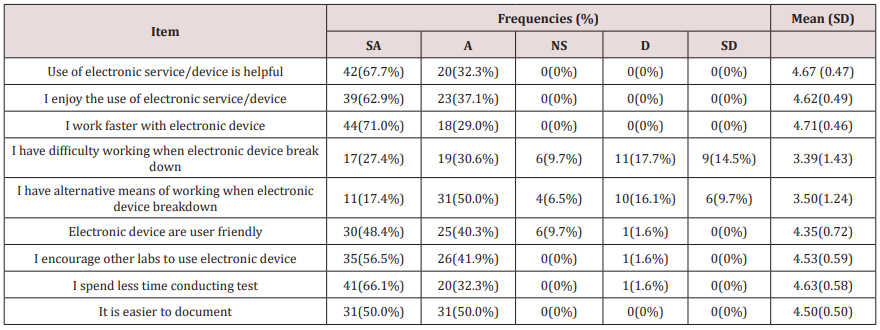
This study examined the challenges medical laboratory
personnel face in the use of electronic services and devices and its
impact on the attitude of medical laboratory personnel. Majority
of the respondents in this study showed positive attitude towards
the operation of electronic devices understanding principle under
which electronic devices work. However, the supply of electronic
device accessories such as reagent was a major challenge. This is
in line with the work of [4], which reported that the use of modern
technology in the laboratory demanded high capital cost in terms of
instrument installation and maintenance. According to his study, the
status of international market may affect the supply of reagents and
spare parts of equipment. Finally, the availability of maintenance
of instruments and supply of reagent kits is limited to ‘big’ cities
and not available in remote areas. A little over a quarter (27.4%) of
our respondents agreed that calibration of electronic devices was
easy, and therefore revealed negative response, with about 15%
responding that maintenance/servicing of electronic device was
easy. This indicates that a significant number of the respondents
have challenges in using electronic device when there is the need to
either maintain or service them. With the documentation of result
by electronic equipment as a challenge, most of the respondents
scored 3 with a mean of 2.6452 and standard deviation of 0.6031.
This indicates that documentation of results was not a challenge
when it comes to the use of electronic devices. It is in this direction
that the study sought to identify some of the challenge’s medical
laboratory personnel face in the use of electronic service and
device and put in measures to help address these challenges. A
higher proportion of the respondents agreed to the fact that results
produced by electronic devices are reliable, with average duration
of production being minutes indicating a better turnaround time.
The study also revealed that the use of electronic device in the
medical laboratory has had a positive impact on the attitude of
some medical laboratory personnel. The mean score for most of the
sub-scale was above 4 indicating positive attitudes. The implication
is that some medical laboratory personnel have acquired some
positive attitudes toward the practice of their profession after
the introduction of electronic service and device in medical
laboratories.
This is not surprising, since most of the laboratories are now
moving from the manual way of practicing to the use of electronic
services. The above findings are in line with [7], who confirmed
technology makes use of laboratory equipment more user friendly,
and also give better control of the entire process affecting the
attitude
of personnel positively. Again, [8] also reported that other benefits
of electronic services in medical laboratories in relation to attitude
of personnel include; decrease in the turnaround time (TAT) for
the investigations. According to Markin and [9], in order to obtain
high throughput, proper documentation, efficacy and accuracy with
minimum expenditure of reagents in limited time and space, use
of technology in the medical laboratory becomes very important.
However, the use of electronic services and device in the laboratory
also had some negative impact on the attitude of personnel. The
mean score for two of the sub-scale was below 4 indicating negative
attitudes. [4] reiterated that in cases of breakdown or if the
equipment is out of order, alternative arrangements are very costly,
and personnel often do not care leaving patients stranded. This was
similar to the findings in our study, thus often alternative means
of working when modern technology equipment break down are
not there.In summary, the introduction of the electronic services
has helped develop positive attitude in some medical laboratory
personnel towards the practice of their profession[10].
Medical laboratory personnel had challenges with the supply
of electronic device accessories such as reagent, calibration and
maintenance/servicing of electronic device [11]. This requires
immediate attention by authorities and other stake holders including
the Ministry of Health and its agencies to address these challenges.
Some personnel have developed positive attitude towards their
work in the medical laboratory due to the introduction of electronic
services and devices with each of the personnel receiving training
before the use of electronic devices [12].
Based on the findings of the study, the following
recommendations are made:
Reliable suppliers of electronic medical laboratory device and
accessory must be engaged by hospital management such that
supply of accessories such as reagent and others could be done
quarterly. This must be done in order to avoid shortage in supply
since most hospitals have policies which allow procurements to
be done quarterly. Medical laboratory training institutions could
collaborate with electronic medical laboratories for their students
to have attachment and training on electronic medical laboratory
services such that before the student’s complete school they are
adequately prepared for electronic services in the various medical
laboratories. The ministry of health must encourage all medical
laboratories in Ghana to use electronic services since its use will
have a positive impact on the attitude of personnel towards the
practice of their profession. There must be workshops and refresher
courses for medical laboratory personnel on the use of electronic
services and devices by the Allied Health Professions Council of
Ghana on regular basis so personnel could abreast themselves
with current trends in the use of electronic services and devices in
medical laboratories.
For more Lupine Publishers Research and Reviews on Healthcare Open Access Journal Articles:
https://lupine-publishers-research.blogspot.com/


